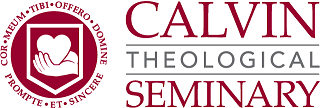Date of Award
2016
Document Type
Dissertation
Degree Name
Doctor of Philosophy (PhD)
First Reader
John Bolt
Second Reader
Ronald J. Feenstra
Third Reader
Lyle D. Bierma
Fourth Reader
Joel R. Beeke
Abstract
For more than two millennia believers have struggled with the antinomy of God’s absolute sovereignty over and man’s ultimate responsibility in justification and sanctification. For at least the past several hundred years theologians have used some version of the terms “active justification” and “definitive sanctification” in an attempt to illuminate this mystery. However, in the past decade scho lars have begun to criticize these concepts, saying that they are unsupported in Scripture, lead to theological confusion, and are of no practical benefit to believers. Through the work of theologians from the broader Dutch Reformed tradition, especially Herman Bavinck (1854-1921), Alexander Comrie (1706-1774), Herman Witsius (1636-1708), and Abraham Kuyper (1837-1920), this thesis will demonstrate that the terms active justification and definitive sanctification are derived from Scripture and serve to clarify, not obscure the doctrines of justification and sanctification. In addition, the paper will show that neglect, misuse or misunderstanding of the terms have resulted in contemporary criticisms that are unconvincing and unfounded. Writings of the aforementioned theologians will define and expound four characteristics held in common between active justification and definitive sanctification, i.e., inseparability: active justification is distinct but also inseparable from passive justification; likewise definitive sanctification is distinct but also inseparable from progressive sanctification (Bavinck); objectivity and decisiveness: justification and sanctification are both grounded solely in God’s objective and decisive decree (Comrie); Christ centeredness: Christ’s righteousness and holiness are the ultimate source of the believer’s justification and sanctification (Witsius); and God’s believer’s justification and sanctification (Witsius); and God’s absolute sovereignty: the believer’s salvation in all its dimensions is under the gracious, sovereign disposition of believer’s salvation in all its dimensions is under the gracious, sovereign disposition of our hour heavenly Father (Kuyper). All four characteristics of active justification and All four characteristics of active justification and definitive sanctification emphasize the “God-driven” nature of salvation. This thesis will explain how when properly defined and presented the terms active justification and definitive sanctification are important theologically, bringing clarity to the issue of the perfect balance between God’s sovereignty and human responsibility in salvation. The paper will also reveal the practical benefit of these terms to believers who need aneed a deeper understanding of how the dimensions of justification and sanctification can be both distinct and perfectly unified. Finally, the study will show how active justification and definitive sanctification offer true believers practical assurance of their perseverance unto glory, and provide pastors with an invaluable tool for exhorting parishioners who may have lapsed into either triumphalism or defeatism.
Recommended Citation
Park, Jae-Eun, "Driven By God: Active Justification and Definitive Sanctification in the Soteriology of Bavinck, Comrie, Witsius, and Kuyper." (2016). CTS PhD Doctoral Dissertations. 42.
https://digitalcommons.calvin.edu/cts_dissertations/42



